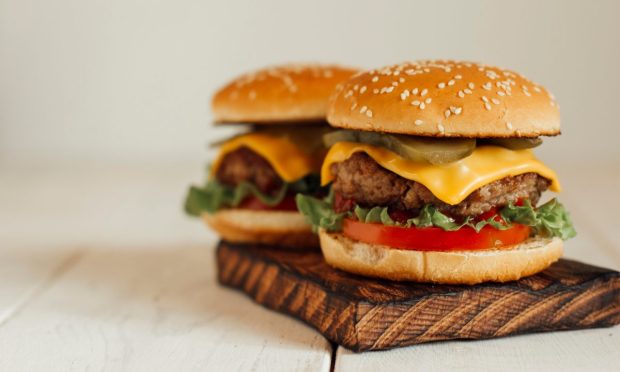Carbon Is the New Carbs as Restaurants Roll out Planet-Saving Menu Tweaks

Say you want to order a beef burger. Comes from a cow. Cows are large, and it turns out, quite gassy. Chickens are small and less full of hot air, so to speak. Question: Should you pay more for the massive methane behind the burger and less for the chicken patty? We may soon find out.
Bridging the real and the ridiculous, a recent study suggests that menu choices with “carbon labels” on food items estimating the climate impact of each dish may be the future of climate-conscious dining. Score-wise, that’s pasta primavera, 1, and 20-ounce porterhouse steak, zero.
Carbon footprint has been studied for groceries, but researcher Ann-Katrin Betz and a team at Julius-Maximilians-Universität Würzburg, Germany, realized that restaurant dining is a blind spot when it comes to carbon and cookery, and they investigated it, as researchers do.
Publishing their findings in the open-access journal PLOS Climate Wednesday (May 11), the team may be opening a Pandora’s box for date night dinners out, now that we’re back to doing such things.
It all gets a bit science-y, as you’d expect. The team tested a variety of menu designs with some defaulting to climate-friendly options and labeled with a carbon footprint for items. Other menus did not show carbon labels or place eco-friendly entrées where the eye naturally looks.
Out of six hypothetical menus with items presented based mostly on emissions produced by livestock versus agriculture, results “indicated that more climate-friendly dish choices resulting in lower greenhouse gas emissions were made with the low-emission than the high-emission default condition, and when carbon labels were present rather than absent.”
Their conclusion? “As a part of ecologically sustainable practices, restaurants can help diners reduce their carbon footprint via dish choices. To this end, changing menu design may result in considerable positive effects,” and “adding information about the ecological impact of the dishes is feasible, and both customers and restaurants have expressed an interest in such information.”
All we wanted was a Happy Meal, not a lesson in climatology. But they are connected.
See also: For Restaurants, Inflationary Challenges Prompt Menu Creativity
An Inconvenient Moo
Hip-hop mogul and serial entrepreneur Russell Simmons and former U.S. Vice President Al Gore famously debated the topic of cows and carbon — an issue that’s followed Gore around for years after like a lost calf, plaintively mooing as it slowly heats the Earth with its… emissions.
We’re pretty sure the team at Julius-Maximilians-Universität Würzburg — no safety school by any means — did not measure how QR code menus might alter these outcomes. They should.
Luckily for Earth, early this year, PYMNTS spoke with Michele Baker Benesch, the woman president of Menu Men, designers of restaurant menus since 1968.
As Benesch told PYMNTS, “Remember, a menu is [the] one thing everyone in your restaurant is guaranteed to read, so, you want it to be inviting.” Not sure how “inviting” a carbon label is next to one’s beef bourguignon, and she’s not a huge fan of QR anyway. Too impersonal.
But we do see an answer here. Someone email the Dean of QR Code Studies at Würzburg U.
Read also: Many Restaurant Customers Feel Alienated by QR Code Menus
It’s Not Easy — or Cheap — Being Green
PYMNTS’ Restaurant Readiness Index found that nearly one-third of restaurant managers think QR codes elevate the dining experience — a sentiment shared by just 10% of consumers.
But if carbon labels were scanned instead of read, might it soften the blow that your Creamy Sun-Dried Tomato Pan Seared Sole is leading us to another Netflix apocalypse series?.
Besides, in the final analysis, all we want to know is “how much more is it going to cost?” We return to the campus of leafy University of Würzburg and our menu experiment for answers.
As they said, “dish prices were determined in accordance with typical restaurant prices in Germany and were presented in euros. Vegetarian dishes are usually lower in price than meat dishes; therefore, the prices used in this experiment were positively associated with [greenhouse gas] emissions.”
Sounds like they stacked the deck against meat, chicken and even fish. But if you read the study, they didn’t. Still, what chance does ham have against a vegan salad pricewise? Unknown.
If, as a society and an industry, it’s decided that, say, General Tso’s Chicken is contributing to global warming and thus must be thrice the price, it almost makes tofu seem tasty.
See also: To Survive and Grow Restaurants Put Tech Innovation and Culture on the Menu
